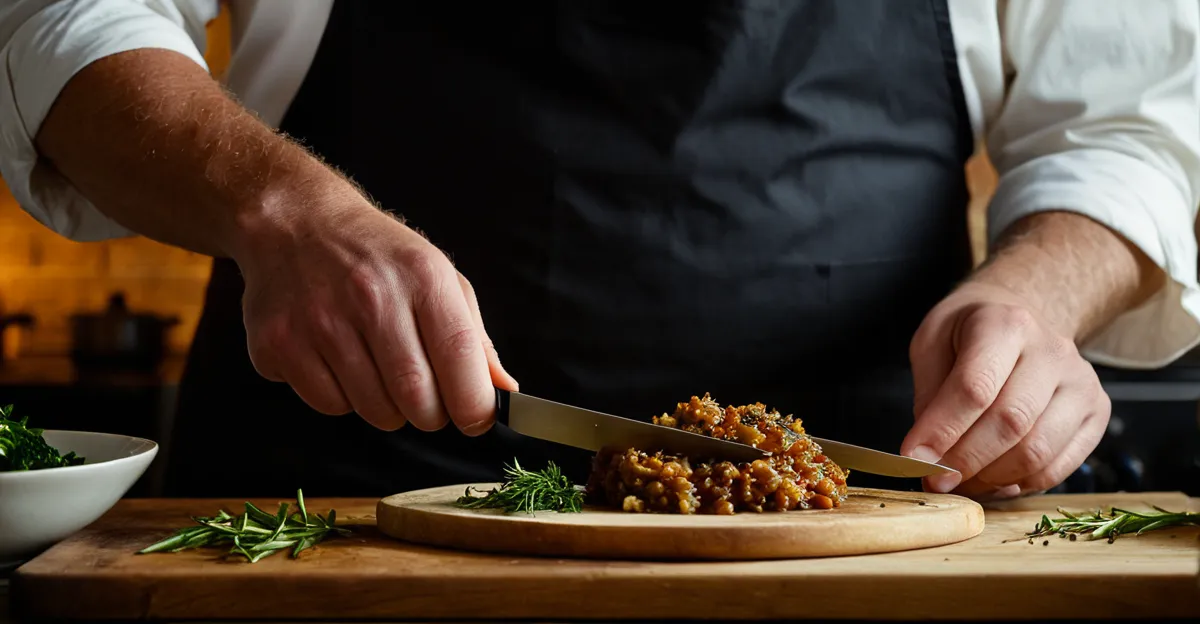Classic UK Cooking Techniques: A Brief Overview
Traditional UK cooking techniques form the backbone of historical UK cuisine, reflecting centuries of culinary evolution. The four foundational methods include roasting, steaming, boiling, and baking — each integral to preparing classic British recipes.
Roasting is widely used for meats such as beef or lamb, producing iconic dishes like the Sunday roast. This technique enhances flavour by cooking over dry heat, often accompanied by roasted root vegetables seasoned with herbs. Steaming, though less celebrated, preserves the delicate texture and nutritional value of ingredients like dumplings or puddings. Boiling is essential in British staples like boiled potatoes and mushy peas, and it facilitates dishes such as Scotch broth, which combines various boiled vegetables and meats.
Have you seen this : What Are the Essential Ingredients in Traditional UK Cooking?
Baking underpins beloved recipes like Victoria sponge cake and traditional Cornish pasties. The use of staple ingredients such as potatoes, root vegetables, suet, and simple spices like thyme or parsley complements these techniques. These traditional UK cooking techniques maintain the rich, comforting flavours central to classic British recipes, offering a window into the country’s culinary past with each dish.
Modernizing UK Cooking: Ingredient Innovations
Exploring healthy UK recipes starts with rethinking traditional fats and sugars. Classic British recipes often rely on butter, lard, or refined sugars, but ingredient substitutes in the UK now include healthier oils like olive or avocado, as well as natural sweeteners such as honey or maple syrup. These changes reduce calorie count without compromising flavour, appealing to modern dietary preferences.
Topic to read : How Can Traditional UK Cooking Be Given a Modern Twist?
Plant-based and allergen-friendly alternatives play a key role in diet-friendly British cooking. For example, mashed potato can be enriched with olive oil rather than butter, and suet in puddings can be replaced by vegetable fats. Using these substitutes allows classic recipes to accommodate vegan, gluten-free, or low-cholesterol diets—ensuring traditional UK cooking techniques remain accessible.
Locally-sourced and seasonal produce further enhance these innovations. Incorporating fresh, UK-grown vegetables like kale, beetroot, or heritage carrots aligns with sustainability goals while revitalizing flavour profiles. This combination of ingredient swaps encourages home cooks and chefs alike to preserve the heart of classic British recipes while embracing health and environmental consciousness.
Embracing Modern Kitchen Equipment
Modern kitchen gadgets UK, such as pressure cookers, sous-vide machines, and air fryers, have transformed traditional UK cooking techniques by combining convenience with precision. Pressure cookers enable rapid preparation of slow-cooked stews or broths, retaining rich flavours characteristic of historical UK cuisine while cutting cooking times dramatically. This adaptation respects the integrity of classic British recipes like beef stew or Scotch broth but suits today’s hectic lifestyles.
Sous-vide British cooking offers exact temperature control, enhancing textures in meats and vegetables traditionally roasted or boiled. For example, roasting a lamb joint sous-vide before a quick sear maintains moisture and tenderness, elevating the Sunday roast experience. Air fryers provide a healthier alternative to deep frying, recreating crispy textures essential to dishes like fish and chips without excessive oil.
By integrating these tools, home cooks can preserve the essence of classic flavours while benefiting from efficiency and consistency. Modern kitchen gadgets UK bridge the gap between tradition and innovation, encouraging experimentation while safeguarding beloved cooking principles. This approach makes mastering classic British recipes more accessible without sacrificing their renowned qualities.
Global Influence and Fusion Approaches
The UK’s rich multiculturalism inspires fusion British recipes that blend traditional UK cooking techniques with global flavours. This global influence refreshes classic British recipes, introducing exciting layers of taste while respecting the foundations of historical UK cuisine.
How do fusion British recipes enhance classic dishes? By incorporating spices or cooking methods from other cultures, they add complexity and modern appeal. For example, a traditional roast might be complemented with Indian spices like garam masala, or a shepherd’s pie layered with Mediterranean vegetables and herbs. These international twists create vibrant, innovative plates that remain rooted in British culinary tradition.
Incorporating multicultural UK food influences requires balancing new elements without overwhelming the original dish. Successful fusion depends on understanding flavour profiles and complementary techniques. UK restaurants often showcase such fusion, reimagining staples like fish and chips with Asian-inspired coatings or curries infused with British game meat.
This global approach encourages home cooks to experiment safely, using familiar classic British recipes as a base. Fusion British recipes offer an accessible way to explore diverse flavours while honouring the rich heritage of historical UK cuisine, strengthening the dynamic identity of modern British food.


